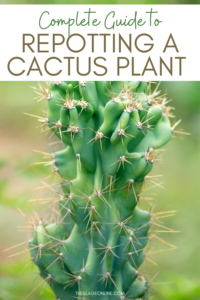Fish emulsion is a nutrient-rich organic fertilizer derived from the byproducts of fish processing. This potent substance has gained popularity among gardeners and agriculturalists for its multifaceted benefits in promoting plant growth. Understanding the composition of fish emulsion is crucial for anyone interested in harnessing its capabilities for enhancing soil health and plant vitality.
Composed primarily of fish waste, including fish parts like heads, tails, and guts, fish emulsion typically undergoes hydrolysis, a process that breaks down proteins into amino acids, making nutrients more bioavailable to plants. Additionally, fish emulsion contains vital micro and macronutrients, such as nitrogen, phosphorus, and potassium, along with trace elements like magnesium, calcium, and sulfur, which are essential for robust plant growth and development.
In this article, we will explore the components of fish emulsion, the myriad benefits it offers, and practical ways to incorporate it into your gardening routine.
Understanding the Composition of Fish Emulsion
The ingredients of fish emulsion can vary depending on the source and processing methods. Generally, the primary constituents include:
Proteins and Amino Acids: The hydrolysis process renders proteins into simpler amino acids. These amino acids serve as building blocks for plant proteins, facilitating growth and tissue development.
Nitrogen: One of the fundamental nutrients for plants, nitrogen is crucial for the synthesis of chlorophyll, which enables photosynthesis. This nutrient promotes lush foliage and vigorous growth.
Phosphorus: Essential for root development, flowering, and fruiting, phosphorus aids in energy transfer within the plant. It is vital for early blooming and overall plant maturity.
Potassium: This key nutrient helps regulate various physiological processes in plants, including water uptake and enzyme activation. Potassium strengthens plant resilience against environmental stressors.
Trace Elements: Essential micronutrients, including iron, manganese, and zinc, are present in small amounts but play significant roles in various plant biochemical pathways, ensuring balanced nutrition.
In addition to nutrients, fish emulsion contains beneficial organic matter that enriches the soil structure. The presence of this organic substance enhances soil aeration and water retention, promoting a thriving ecosystem for beneficial soil organisms.
The Multitude of Benefits for Plant Growth
Fish emulsion offers a range of benefits to gardeners and farmers alike, making it a versatile addition to any horticultural arsenal. Here are some of the key advantages:
Organic and Sustainable: Fish emulsion is a natural fertilizer, aligning with organic gardening principles. It reduces reliance on synthetic fertilizers, contributing to sustainable agricultural practices.
Enhances Soil Microbial Activity: The organic compounds in fish emulsion encourage the proliferation of beneficial microorganisms in the soil. These microbes play a crucial role in nutrient cycling, enhancing plant access to available nutrients.
Stimulates Root Development: The balanced nutrient profile in fish emulsion, particularly its phosphorus content, supports robust root systems. Strong roots enhance water and nutrient absorption, leading to healthier plants.
Improves Plant Resilience: Fish emulsion can help plants withstand environmental stressors. The potassium content aids in drought resistance and improves overall vitality, resulting in higher yields and better-quality crops.
Complementary to Other Fertilizers: Fish emulsion can be used in conjunction with other organic fertilizers, such as compost or manure. This synergistic approach maximizes nutrient availability and promotes comprehensive soil health.
Practical Application Tips for Efficient Use
Incorporating fish emulsion into your gardening routine is relatively simple. Here are some practical application methods:
Dilution for Foliar Feeding: For efficient nutrient uptake, dilute fish emulsion in water according to the manufacturer’s instructions. Apply it as a foliar feed during early morning or late afternoon to maximize absorption and minimize evaporation.
Soil Amendment: Integrate fish emulsion into the soil during planting by mixing it with water and applying it directly into the soil around the root zone. This method ensures that nutrients are readily available to young plants.
Regular Feedings: Employ fish emulsion as a supplement to your regular fertilizing schedule. Applying it every 4-6 weeks during the growing season can help maintain optimal nutrient levels in the soil, promoting continuous plant growth.
Pest Resistance: The rich nutrient composition can deter certain pests. While not a standalone pest control solution, it complements Integrated Pest Management strategies by enhancing plant health and vigor.
Environmental Considerations and Precautions
While fish emulsion is a valuable asset in gardening, it is essential to use it judiciously. Over-fertilization can lead to nutrient runoff, which may harm local ecosystems. Additionally, be mindful to source fish emulsion from environmentally responsible suppliers that prioritize sustainable practices and avoid overfishing.
In conclusion, fish emulsion is a powerhouse of nutrients that can tremendously benefit plant growth. Its rich organic composition enhances soil health, promotes vigorous growth, and ensures environmental sustainability. By understanding its components, advantages, and practical applications, gardeners can effectively harness the potential of fish emulsion in their horticultural endeavors, leading to lush, thriving plants. Incorporating fish emulsion into your gardening routine not only nourishes plants but also fosters a healthier, more ecologically balanced garden ecosystem.





Leave a Comment